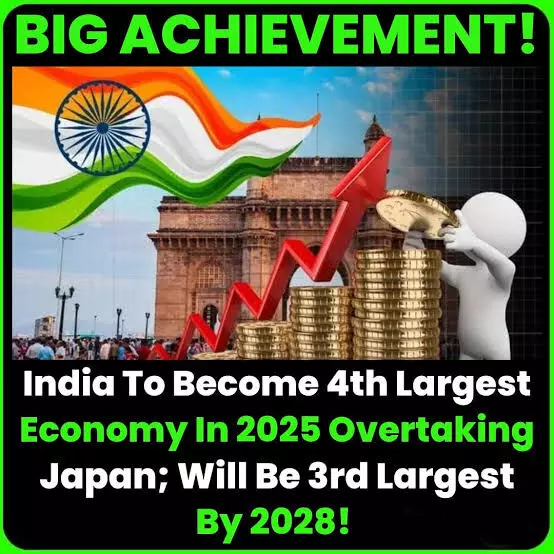India at the Podium: The Promise and Challenge of Becoming the World’s Fourth-Largest Economy

India’s ascent to the rank of the world’s fourth-largest economy is a defining moment in its modern history. With a nominal GDP of $4.19 trillion, India has officially surpassed Japan, trailing only the United States, China, and Germany. This transformation is not just a matter of numbers; it represents decades of reform, resilience, and the collective aspirations of over a billion people.
This achievement is particularly striking when one considers the journey. It took India more than six decades after independence to reach its first $2 trillion in GDP. The next $2 trillion was added in just eleven years, a testament to the accelerated pace of growth and the impact of policy reforms, technological innovation, and a burgeoning entrepreneurial spirit[4][6]. The country’s economic might is now visible on the world stage, with India increasingly seen as an engine of global growth and a promising investment destination.
Much of this progress has been driven by a combination of factors. The expansion of the services sector, especially information technology and digital services, has positioned India as a global leader in tech-driven industries. At the same time, targeted welfare programs and rural development initiatives have begun to transform the countryside, historically plagued by poverty and lack of opportunity. Schemes like the Pradhan Mantri Garib Kalyan Anna Yojana have ensured food security for hundreds of millions, while the Mudra Yojana has empowered small entrepreneurs, shifting rural India from being seen as a liability to becoming an asset in the growth story.
Yet, as the country celebrates this milestone, it is essential to acknowledge the reality on the ground. For many Indians, the benefits of this economic leap remain out of reach. The contrast between macroeconomic triumph and everyday experience is palpable. Infrastructure gaps persist, with potholes, unreliable public services, and inadequate sanitation still part of daily life in many places. The wealth generated by rapid growth has not always trickled down; instead, it often remains concentrated within urban enclaves and gated communities.
This disparity is not lost on observers or policymakers. The challenge now is to ensure that India’s growth is genuinely inclusive. While the government’s welfare programs have made a significant impact, there is a pressing need for deeper reforms in education, healthcare, and skills development. Without these, the demographic dividend that has powered India’s rise could become a liability, as millions of young people enter the workforce without adequate preparation for the jobs of the future.
Moreover, India’s manufacturing sector, though growing, still lags behind its potential. The country must address regulatory bottlenecks, improve logistics, and foster an environment where small and medium enterprises can thrive. The promise of “Make in India” will only be fulfilled when manufacturing becomes a true engine of job creation and export growth.
Another critical area is the reduction of inequality. India’s per capita GDP remains far below that of the countries it has surpassed in total GDP. The gap between rural and urban, rich and poor, and men and women remains wide. Growth must be broad-based, with investments in rural infrastructure, health, and education to ensure that prosperity reaches every corner of the country.
Fiscal prudence is also necessary. As India races ahead, government debt and deficits must be managed carefully to avoid future crises. At the same time, the state must continue to invest in social security and safety nets for the most vulnerable.
Constructive criticism at this juncture is not just warranted—it is vital. India’s progress is real, but the journey is far from over. The country must move beyond celebrating its ranking and focus on the quality and inclusiveness of its growth. This means not just adding trillions to GDP, but ensuring that every Indian has the opportunity to contribute to and benefit from the nation’s success.
India’s rise to the fourth spot is a foundation, not a finish line. The next goal—becoming the world’s third-largest economy—is within reach, but it must be pursued with a commitment to equity, sustainability, and shared prosperity. The world is watching, and so are the millions whose lives stand to be transformed by the choices made today.
In the end, India’s economic journey is not just about overtaking other nations in the GDP rankings. It is about building a society where growth is meaningful, opportunity is universal, and the promise of progress is fulfilled for all.
